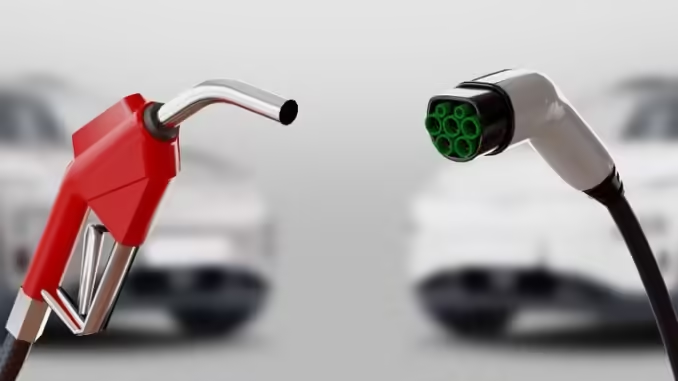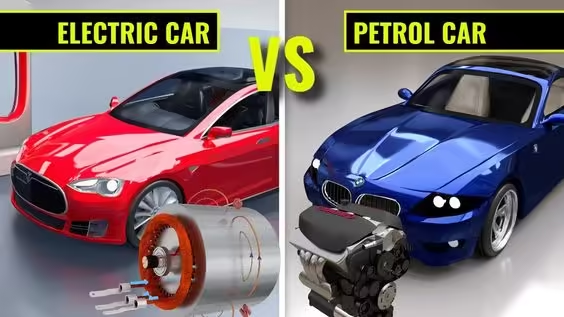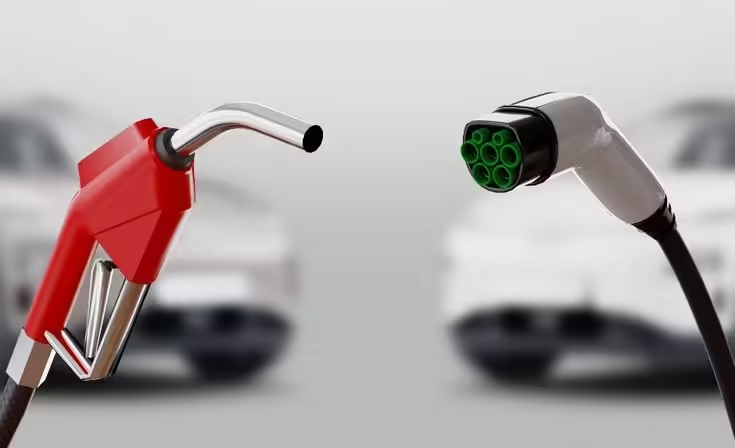
As electric vehicles (EVs) gain popularity, the conversation around their maintenance needs compared to traditional internal combustion engine (ICE) vehicles is becoming increasingly relevant. Consumers are interested in understanding the differences between maintaining an EV versus a gasoline or diesel-powered vehicle, particularly in terms of costs, servicing frequency, and overall benefits.
In this blog post, we’ll explore the key factors that differentiate the maintenance requirements of electric cars and ICE vehicles. We’ll discuss the costs associated with each, the benefits of switching to EVs, and how often both types of vehicles need servicing.

1. The Simplicity of Electric Car Components
One of the fundamental reasons why electric cars require less maintenance than traditional vehicles lies in their simplicity. The drivetrain of an EV contains far fewer moving parts than an ICE vehicle. In an internal combustion engine, there are hundreds of components that work together to power the car, including pistons, gears, belts, and valves. Over time, these parts experience wear and tear and need regular servicing to avoid engine failure.
EVs, in contrast, utilize an electric motor and a battery pack to generate power. The electric motor has a much simpler design with fewer parts that can wear out. There’s no need for components like spark plugs, oil filters, timing belts, or exhaust systems, all of which are common in ICE vehicles.
Key takeaway:
- EVs have fewer mechanical components, which leads to fewer breakdowns and less frequent servicing.
- ICE vehicles have complex engine systems that require regular maintenance and part replacements.
2. Routine Maintenance Costs: Electric Cars vs. Traditional Cars
The cost of maintaining a vehicle can add up significantly over time, particularly for ICE vehicles, where routine services are more frequent and varied.
Traditional Cars:
In ICE vehicles, owners need to keep up with regular services such as:
- Oil changes: Most ICE vehicles require oil changes every 3,000 to 7,500 miles to ensure the engine runs smoothly. Over time, skipping oil changes can lead to severe engine damage.
- Air filter replacements: Combustion engines require clean air to operate efficiently, and air filters need regular replacing to ensure optimal performance.
- Transmission fluid: Automatic transmissions require regular fluid changes to prevent wear on internal components.
- Exhaust system repairs: Exhaust systems in ICE vehicles can corrode over time, leading to expensive repairs or replacement of parts like the catalytic converter.
- Brake pads: Traditional vehicles rely on friction braking, which wears down the brake pads faster compared to regenerative braking systems in EVs.
Electric Cars:
EVs, on the other hand, require much less routine maintenance. Some common maintenance tasks include:
- Tire rotation: EVs are heavier than ICE vehicles due to the battery pack, which can lead to faster tire wear. Regular tire rotations are needed to ensure even wear.
- Brake servicing: EVs use regenerative braking, which recovers energy and reduces the need to use traditional brakes. As a result, brake pads and rotors last significantly longer.
- Battery health checks: While the EV battery doesn’t require maintenance in the traditional sense, manufacturers recommend periodic health checks to ensure optimal performance.

Cost comparison:
The overall maintenance cost for EVs is lower than for ICE vehicles. A 2020 study by Consumer Reports found that over the lifetime of a vehicle (150,000 miles), an electric car owner can expect to spend about half as much on maintenance as someone with a gas-powered car. The absence of oil changes, transmission services, and exhaust repairs significantly reduces costs for EV owners.
Key takeaway:
- ICE vehicles require regular maintenance that can add up, including oil changes, air filters, and transmission fluid replacements.
- EVs have lower routine maintenance costs, primarily focused on tire rotations, brake servicing, and battery health checks.
3. Long-Term Repairs and Replacement Costs
As vehicles age, both electric and traditional cars may require more significant repairs. However, the type and frequency of these repairs can vary dramatically.
Traditional Cars:
- Engine repairs: Over time, the engine in an ICE vehicle can suffer from wear and tear. Major repairs, such as replacing pistons or fixing valve issues, can be extremely costly.
- Transmission failures: Transmission systems are complex and expensive to repair or replace, and over time, they often require servicing or replacement, particularly in vehicles driven in stop-and-go traffic.
- Emissions-related repairs: Traditional vehicles equipped with catalytic converters and other emissions control devices can experience failures, leading to costly repairs and replacement.
Electric Cars:
- Battery replacement: The most significant long-term concern for EV owners is the battery. Although EV batteries are designed to last between 8 and 15 years, depending on usage, their capacity may degrade over time, leading to a reduction in range. Replacing an EV battery can be expensive, although prices have been dropping as battery technology advances. Many EV manufacturers provide long warranties (often 8 years or 100,000 miles) to cover battery degradation, reducing the financial risk for owners.
- Electric motor longevity: Electric motors in EVs are highly durable and typically outlast the battery. While they may require servicing after several years, they are less prone to breakdowns compared to ICE engines.
Key takeaway:
- ICE vehicles can face costly engine and transmission repairs in the long term.
- EVs may require battery replacements after a decade or more, but motor longevity and fewer major repairs balance out the costs.
4. Frequency of Servicing
Due to their design, ICE vehicles require more frequent maintenance visits than electric cars. For example:
- Oil changes in traditional vehicles are recommended every few thousand miles.
- Brake pads and rotors wear out faster in traditional cars due to the reliance on friction braking.
EVs, thanks to their simpler mechanics and regenerative braking systems, can go longer between servicing. Some EV owners report only needing an annual check-up to inspect the vehicle and update software. The reduced need for maintenance translates to fewer trips to the mechanic and more convenience for EV owners.
Key takeaway:
- ICE vehicles require more frequent servicing, with regular oil changes, brake services, and fluid checks.
- EVs typically require fewer service visits, saving owners time and hassle.
5. Software and Over-the-Air Updates
A unique advantage of electric vehicles is the ability to receive software updates that can improve performance, fix bugs, or even add new features without requiring a visit to a mechanic.
Many EV manufacturers, like Tesla, offer over-the-air (OTA) updates that can enhance the car’s functionality remotely. This reduces the need for traditional service visits, offering convenience and keeping the vehicle up to date with the latest advancements.
In contrast, traditional vehicles do not have this level of software integration, and any improvements typically require a physical visit to the dealership or mechanic.
Key takeaway:
- EVs benefit from over-the-air software updates, reducing the need for in-person servicing.
- ICE vehicles typically require mechanic visits for upgrades or fixes.
6. Environmental Impact of Maintenance
Another critical consideration in the EV vs. ICE vehicle maintenance debate is the environmental impact of maintaining each type of vehicle.
Traditional cars require oil changes, coolant replacements, and other fluid services that can generate waste if not properly disposed of. Old engine oil, coolant, and brake fluid can leak into the environment, causing pollution.
Electric vehicles, with their lack of oil and fewer fluid requirements, have a significantly lower environmental impact from a maintenance perspective. Even brake dust is reduced in EVs due to the regenerative braking system, which lessens the wear on brake pads and lowers the amount of particulate matter released into the environment.
Key takeaway:
- ICE vehicles generate more waste from oil, coolant, and fluid changes, contributing to environmental pollution.
- EVs have a smaller environmental footprint due to their simpler maintenance needs and fewer consumable products.
Conclusion
When comparing the maintenance requirements of electric vehicles and traditional internal combustion engine vehicles, EVs come out on top in terms of simplicity, cost savings, and environmental benefits. Electric cars have fewer moving parts, reducing the likelihood of mechanical failures and decreasing the need for frequent servicing. They also have lower long-term repair costs, especially as battery technology continues to improve and prices drop.
While traditional cars may still be necessary in regions where EV infrastructure is lacking, for those looking to reduce their maintenance headaches and environmental impact, electric vehicles offer a compelling alternative. The reduced need for routine services, fewer long-term repair concerns, and the added convenience of software updates make EVs a future-proof option for drivers worldwide.

Leave a Reply